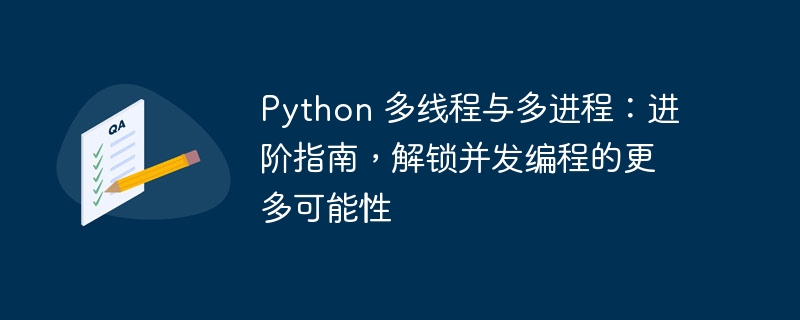

Multi-threading and multi-process are two different Concurrent programming technologies. Multi-threading refers to executing multiple tasks simultaneously in one process, while Multi-process refers to executing multiple tasks simultaneously in different processes.
The advantage of multi-threading is that the switching cost between threads is very low, and the same memory space can be shared, so the communication overhead is very small. However, multi-threading also has some disadvantages, such as synchronization and communication between threads are more difficult, and multi-threaded programs are more prone to deadlock problems.
Multi-processThe advantage is that the isolation between processes is relatively good, and the advantages of multi-core processors can be fully utilized. However, the disadvantage of multi-process is that the cost of switching between processes is relatively high, and the communication overhead between processes is relatively large.
2. Python multi-threading and multi-process implementation, multi-threading and multi-process programming can be achieved by using the threading and multiprocessing modules.
2.1 Multi-threaded programming
import threading
def task1():
print("Task 1 is running...")
def task2():
print("Task 2 is running...")
if __name__ == "__main__":
t1 = threading.Thread(target=task1)
t2 = threading.Thread(target=task2)
t1.start()
t2.start()
t1.join()
t2.join()
class to create two thread objects, and use the task function as the target function of the thread object. Finally, we use the start() method to start the thread and use the join() method to wait for the thread to end.
2.2 Multi-process programming
import multiprocessing
def task1():
print("Task 1 is running...")
def task2():
print("Task 2 is running...")
if __name__ == "__main__":
p1 = multiprocessing.Process(target=task1)
p2 = multiprocessing.Process(target=task2)
p1.start()
p2.start()
p1.join()
p2.join()
class to create two process objects, and use the task function as the target function of the process object. Finally, we use the start() method to start the process and use the join() method to wait for the process to end.
3. Python multi-threading and multi-process application scenarios. Some common application scenarios include:
multi-threaded and multi-process programming, you may encounter some common problems. Some of the common problems include:
The above is the detailed content of Python multithreading and multiprocessing: an advanced guide to unlock more possibilities for concurrent programming. For more information, please follow other related articles on the PHP Chinese website!




